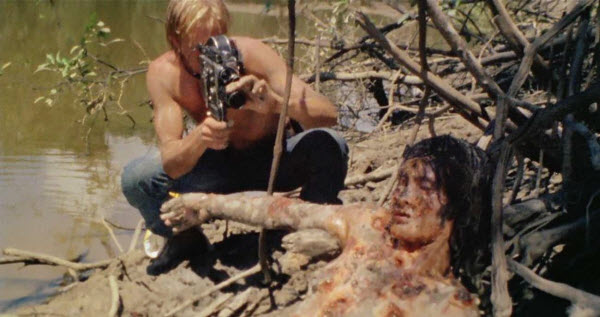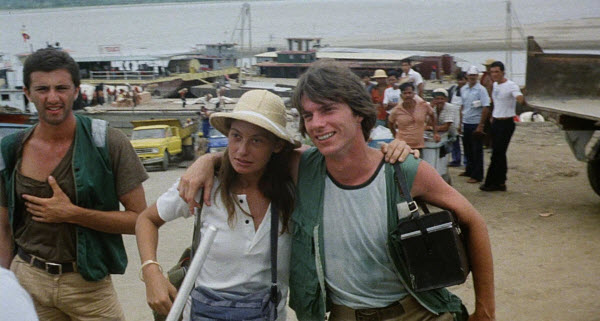During the 1980s, the film industry saw a surge of crime and horror films that pushed the boundaries of realism and brutality. Directors began incorporating graphic and shocking scenes, not only to unsettle audiences but also to perplex law enforcement, who sometimes believed these were real crimes. Among these films, Cannibal Holocaust, released in 1980, stands out for its extreme gore and shocking realism. The film’s portrayal of real animal slaughter and graphic violence led to the arrest of its director, who was accused of murdering his actors due to their disappearance and the inability to locate them. Despite its notorious reputation, which led to its ban in numerous countries, the making of Cannibal Holocaust was almost as disturbing as the film itself. This article provides an overview of the film’s production and the controversies that surrounded it.

The Beginnings of Cannibal Holocaust
The film’s journey began when a distributor from West Germany contacted Italian director Ruggero Deodato, asking him to create a film similar to his earlier work on cannibalism. Deodato agreed and immediately sought a producer, choosing his friend Francesco Pileggi. The duo traveled to Colombia to scout filming locations suitable for the movie’s story, which centers on a rescue mission led by a university professor named Harold Monroe. Monroe is tasked with finding a missing film crew in the Amazon rainforest. He discovers that the crew was killed after causing significant problems for the local tribes. Monroe obtains their footage, which reveals scenes of brutal violence, including murder, torture, dismemberment, and cannibalism. A U.S. television network decides to air the footage, but Monroe insists on viewing it first. Shocked by its horrific content, including scenes of nudity and rape, Monroe demands the footage not be aired, which the network eventually agrees to.
Once Deodato settled on filming locations, he decided to make the film in English to appeal to a wider audience and enhance its credibility. To facilitate distribution in Europe, he cast Italian actors who spoke English. Filming for Cannibal Holocaust began in June 1979 and was completed and released the following year. During this period, the film faced numerous problems, marking it with a reputation for being cursed both during and after production.
Discomfort Among the Cast
Actor Gabriel York, who played Alan Yates, reported that director Deodato displayed an inexplicable level of cruelty during the filming of Cannibal Holocaust. Deodato frequently engaged in long, heated arguments with his crew and was notorious for failing to pay the cast on time. He reportedly coerced actress Francesca Ciardi into performing nude scenes and would berate her whenever she refused. Deodato’s insistence on the brutal killing of animals for realism, combined with his harsh treatment of extras playing cannibals—who were not paid and were put in dangerous situations, such as being forced to stay in a burning hut—caused significant distress. York felt particularly troubled when filming a scene involving the rape of a local girl, which had a negative psychological impact on him, leading to the end of his relationship with his girlfriend upon returning from the Amazon.
Deodato also had many disputes with actor Robert Kerman, who played Professor Harold Monroe. Kerman expressed his hatred for Deodato in several interviews, accusing him of being sadistic and racist, particularly towards Latin American actors. Actor Perry Bercovici, who played Jack Anders, reported crying during the filming of a scene where a turtle was slaughtered.
External Tragedies and Delays
During the filming, tragedy struck when actor Lionello Pio Di Savoia, who played Miguel, learned of his father’s murder. Savoia was visibly distressed while filming a scene and had to take time off to attend his father’s funeral. Additionally, the crew faced delays due to storms and heavy rainfall.

Real Animal Killings
The treatment of animals in American cinema has specific guidelines to prevent cruelty, with animal welfare organizations overseeing scenes involving animals to ensure they are not subjected to harm. Modern cinema relies on advanced special effects to simulate animal interactions and deaths, a technology not available during the production of Cannibal Holocaust. Filmed in the Amazon rainforest, several animals were actually killed to achieve the desired realism. The film features the deaths of a snake, a sea turtle, two monkeys, and a pig. During the filming of the pig’s death, actor Gabriel York lost his composure and could not continue the scene after hearing the pig’s distressing cries. The crew also vomited during a scene involving the slaughter of a monkey. Consequently, the film faced widespread condemnation from animal rights organizations worldwide.

The Accusation of Murder
The controversy surrounding Cannibal Holocaust did not end with its production. After the film’s release, the principal actors signed contracts prohibiting them from appearing in any media for a year, aimed at making the film’s footage appear as realistic as possible if its cast remained out of the public eye. However, just ten days after its release, Deodato was arrested in Italy on charges of violating ethical standards during filming. The court, having reviewed the violent scenes and not locating the actors involved, initially believed the deaths to be real. Deodato faced a potential life sentence if convicted of murder. To counter these allegations, the director arranged for the actors to appear on Italian television to prove their survival. He also presented photos of one actress interacting with the crew post-filming to refute the murder accusations. The court ultimately imposed a four-month suspended sentence for animal cruelty and banned the film.
The Film’s Legacy
Despite the myriad problems faced during its production and subsequent controversies, Cannibal Holocaust shocked audiences and critics with its excessive violence and brutality. The film was banned in over 50 countries at the time, leading to legal battles to lift the bans. While some countries have recently lifted the restrictions, others, like New Zealand, maintain their bans due to the film’s extreme content. Years after its release, Deodato expressed regret for making the film and wished that the animal killings had not occurred. Actor Robert Kerman distanced himself from the project, believing it hindered his career and potential fame.
The story of Cannibal Holocaust remains a stark reminder of the limits of cinema’s quest for realism and the consequences of pushing those boundaries to the extreme.
